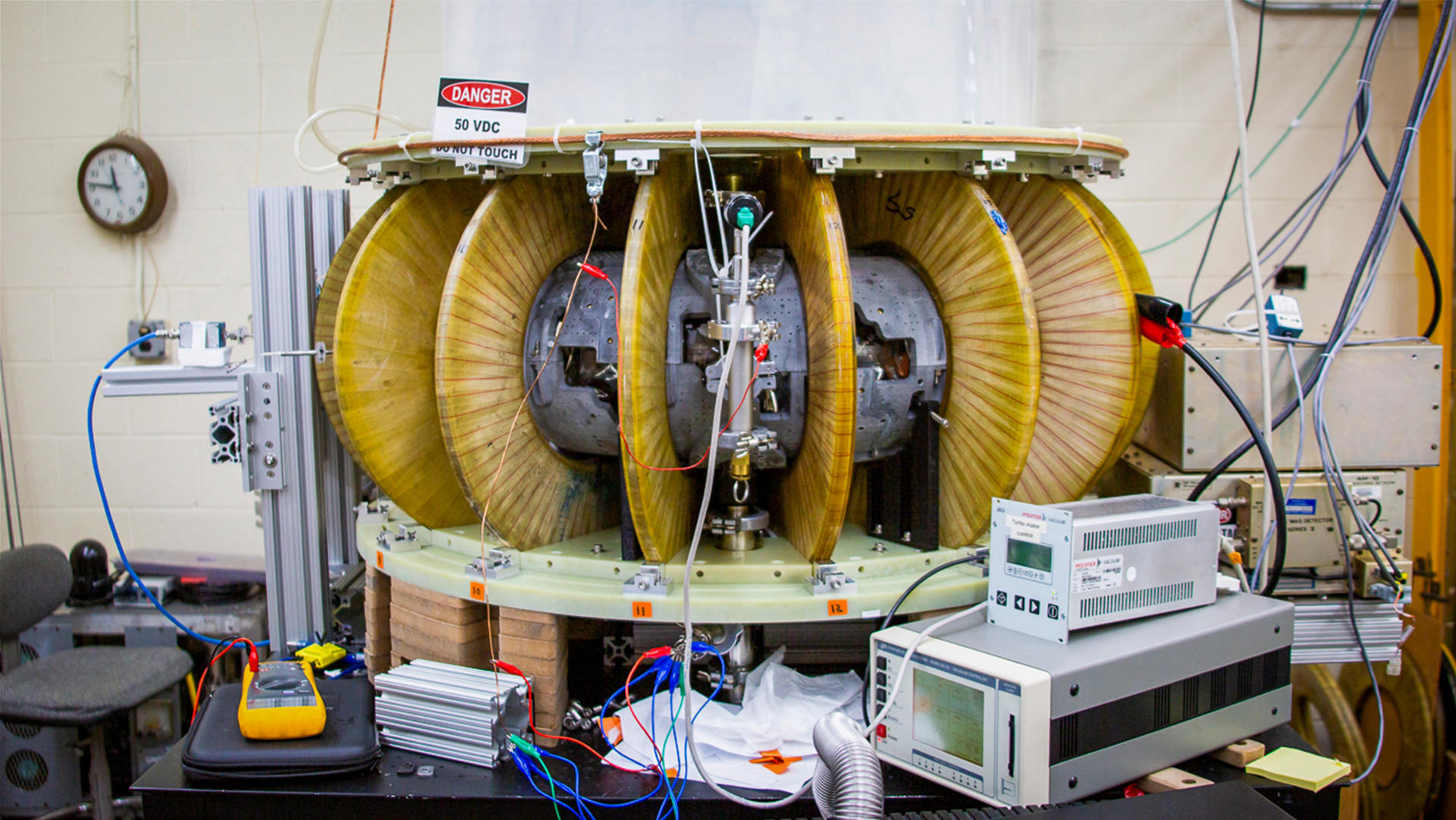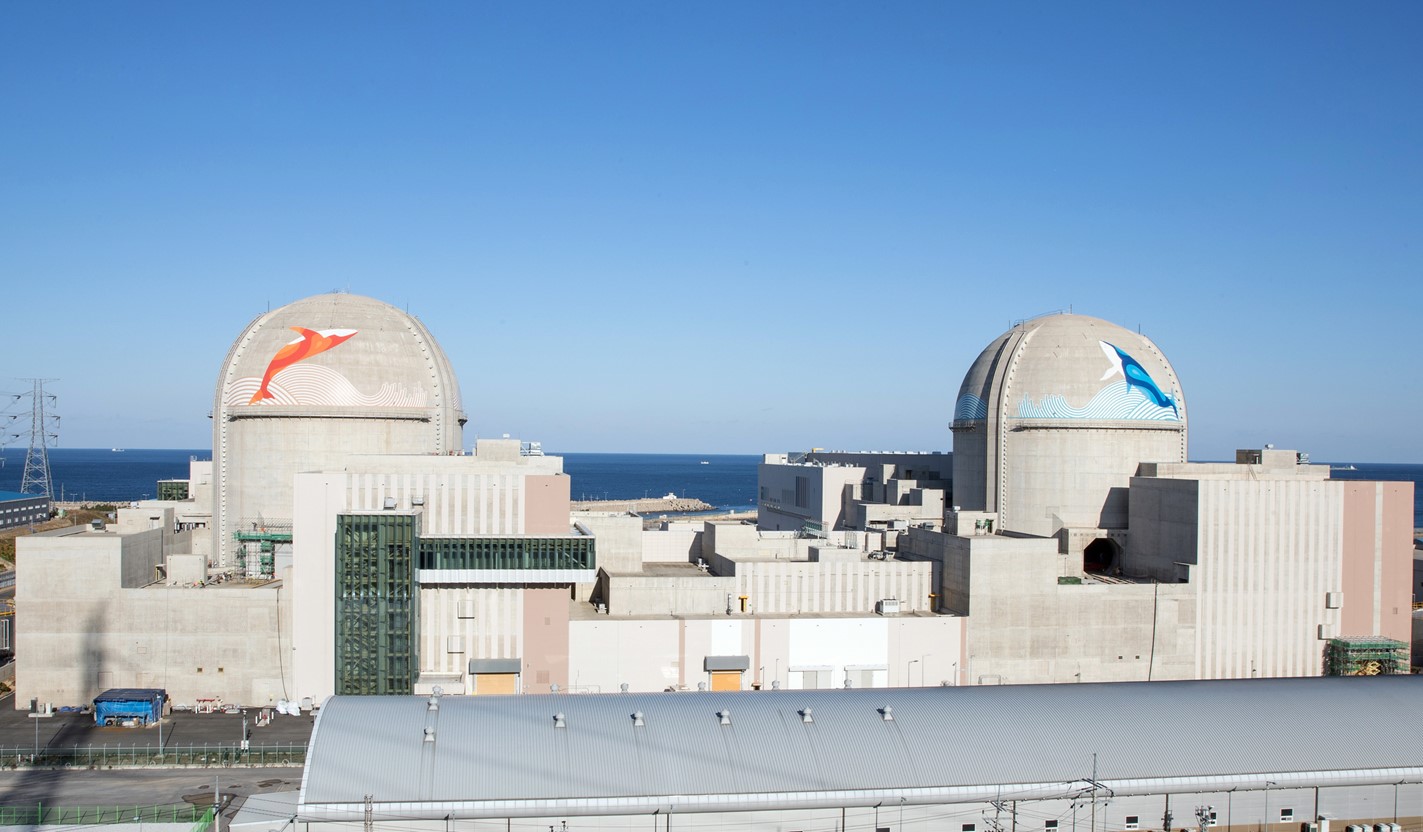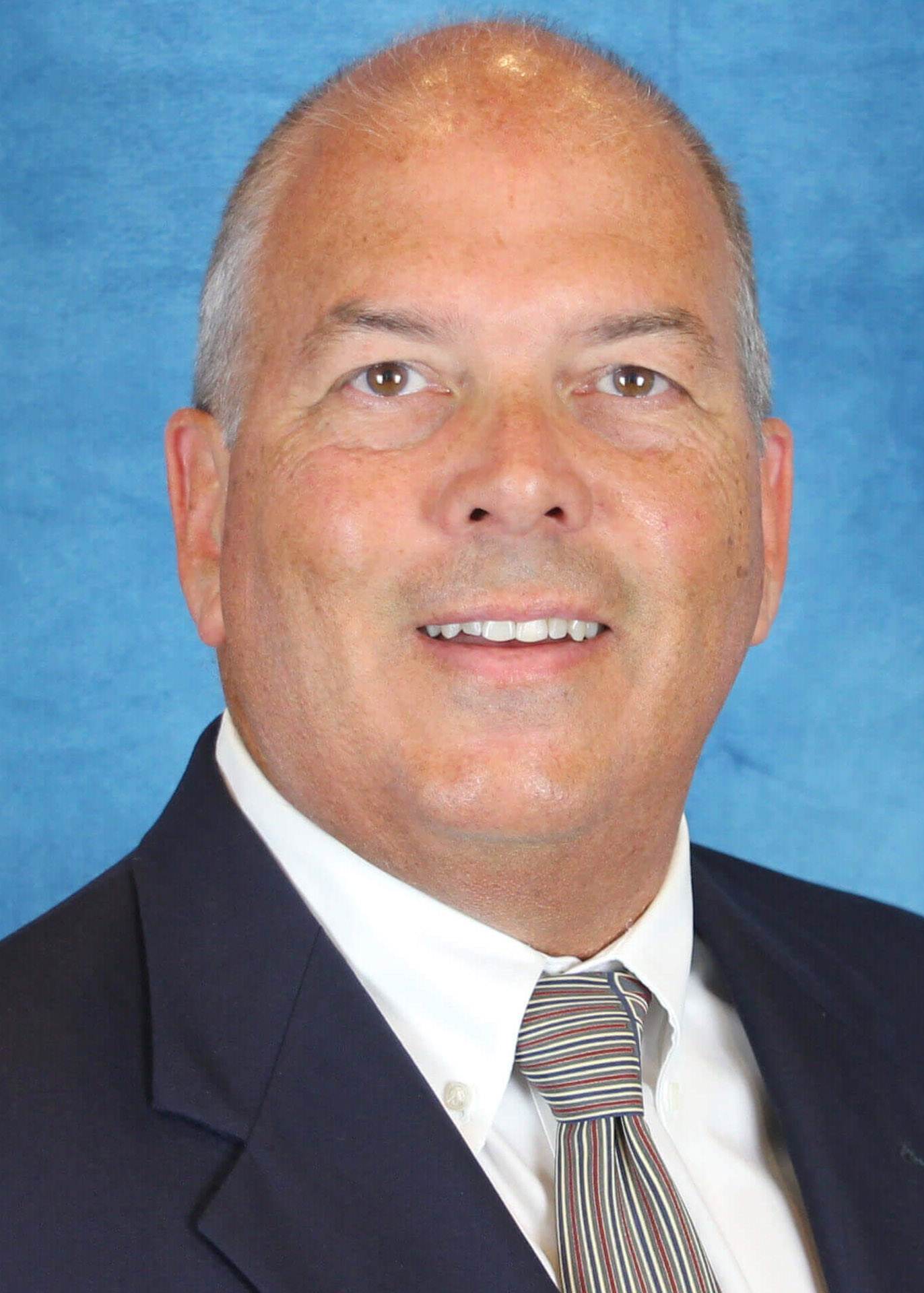MUSE, the first stellarator to use permanent magnets. (Photo: Michael Livingston/PPPL Communications)
Researchers at the Department of Energy’s Princeton Plasma Physics Laboratory are using a stellarator they designed and built using permanent rare-earth magnets and a 3D-printed shell to help test new fusion power concepts. MUSE—the first stellarator built at PPPL in 50 years—took one year to construct and generated its first plasma in February 2023. The work that went into its design has already inspired a stellarator power plant concept being developed by a commercial spin-off, Thea Energy.
Concept art of Oklo's Aurora Powerhouse in use. (Source: Oklo)
Next-generation reactor company Oklo Inc. is teaming up with Diamondback Energy Inc. to bring Oklo’s Aurora Powerhouse units to the American Southwest.
The companies signed a nonbinding letter of intent (LOI) this week to collaborate on a 20-year power purchase agreement that would provide 50 MW of electricity per unit to Diamondback’s Permian Basin operations area. The agreement lays out options to renew and extend the agreement for an additional 20-year term, since the units are designed to operate for 40 years without needing to refuel. Diamondback is an independent oil and gas company headquartered in Texas.
South Korea’s Shin-Hanul-2 is on the right, with Unit 1 to the left. (Photo: KHNP)
Unit 2 of South Korea’s Shin-Hanul nuclear power plant entered commercial operation on April 5, Korea Hydro & Nuclear Power announced. It is the nation’s 26th operating reactor, which continues the upward nuclear trend as South Korea reverses a previous phase-out plan for nuclear.
In Curaçao, IAEA experts built national capacity through demonstrations, including practicing removing the Ra-226 source from the container, characterizing it, and placing it into a stainless-steel capsule. (Photo: IAEA)
Once used for applications in medicine, industry, and research, many countries now have legacy radium-226 sources, according to the International Atomic Energy Agency. With the support of the IAEA’s technical cooperation program, these disused sealed radioactive sources are being recovered, and countries are improving national capacities for their long-term management, including their potential reuse and recycling.
The Hope Creek and Salem nuclear power plants. (Photo: PSE&G)
PSEG Nuclear LLC announced this week it will pursue subsequent license extensions to keep the three reactors at its Hope Creek and Salem plants operating for an additional 20 years. Both plants had been granted initial life extensions years ago by the Nuclear Regulatory Commission, Salem-1 and -2 on June 30, 2011, and Hope Creek on July 20, 2011.
October 31, 1928–March 31, 2024

Jupiter
Clyde Peter Jupiter passed away peacefully March 31, 2024, at the age of 95. Born October 31, 1928, in New Orleans, La., Jupiter attended public and parochial schools in New Orleans, graduating from Xavier University in 1948. He was a member of the Alpha Phi Alpha fraternity and was noted as one of the first African Americans to attend Notre Dame University in 1949.
Following graduation, Jupiter pursued a career in the field of physics, where he was renowned for his contributions to nuclear radiation detection and the advancing of nuclear energy. His career in the nuclear field included working for such agencies as the Atomic Energy Commission, Lawrence Laboratories, and the Nuclear Regulatory Commission.
He also served in the U.S. Army from 1954 to 1956 at the Chemical Corps Laboratory, in Fort Detrick, Md.
Concept art of Holtec’s proposed HI-STORE CISF in New Mexico. (Image: Holtec)
The 5th Circuit Court of Appeals has vacated Holtec International’s license to build and operate a consolidated interim storage facility (CISF) for spent nuclear fuel near the Waste Isolation Pilot Plant in southeastern New Mexico. The Nuclear Regulatory Commission granted the license for the Holtec facility, called the HI-STORE CISF in May 2023.
SRNS’s Sean Alford (standing) discusses career opportunities with Winthrop University faculty and staff during a tour of the Savannah River Site. (Photo: SRNS)
Faculty and staff from Winthrop University recently toured the Department of Energy’s Savannah River Site as part of a workforce development partnership.













